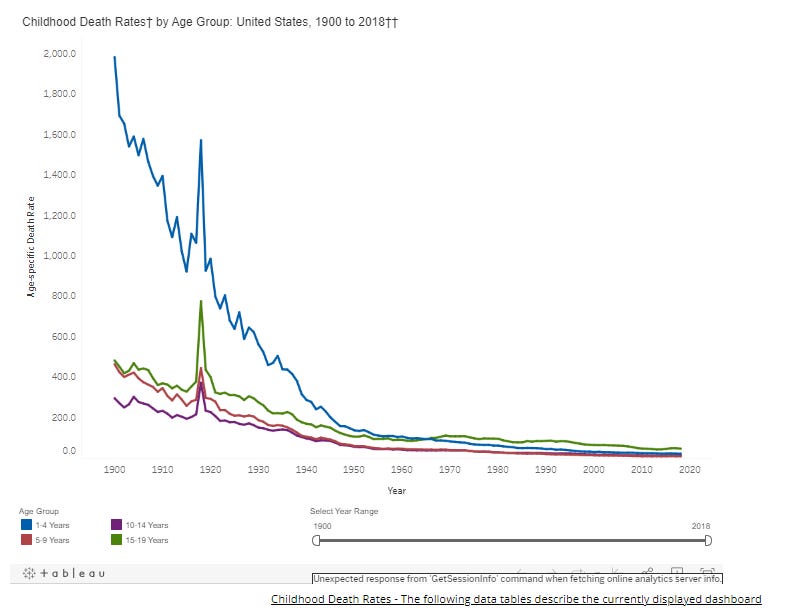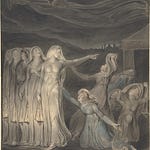Spurred on the untimely death of Matthew Perry (from the cast of Friends, not the 19th century U.S. naval commander), I look back at the history of U.S. mortality trends in a longer trend and how much they’ve improved, and how middle-aged men dying (possibly) of a heart attack would have been very common in the 1950s… but then I end on a happy note. Seriously.
Episode Links
Mortality Trends in the United States, 1900–2018
Childhood death rates
Children's Death Rates Prior Posts
The Nasty Old Days
The Good Old Days -- They Were Terrible!
by Otto L. Bettman
The disgusting old days is more like it
Jan 2001
This book is absolutely harrowing and makes one wonder how America lasted until the 20th century -- learn the 19th century origins of the U.S. drug problem (children got hooked on the morphine and the opium in the patent medicines given to them to calm them down, for example) and why the Prohibition might not actually have been an over-reaction to alcohol; learn how our public school system originated as a rote memorization factory in which children ill-fed, ill-taught, and ill-washed crammed onto benches while an ignorant man or woman, not paid enough for even room and board, tried to keep some semblance of order (for which endeavor one schoolteacher got stoned to death for her pains); learn how common were the transportation accidents of the day, in which railroad tracks went through towns without regard to the usual traffic and a propensity for cutting the maintenance costs meant dangerous conditions for those on and off the train.
This book does not go into exhaustive detail (even if it exhausts the reader), and is illustrated with clippings from magazines and newspapers of the time. One other reviewer complained that photographs weren't used, but truthfully I don't =want= to see the photographs of the conditions. The drawings and the text provide enough horror, and I think Dr. Bettman did not want to put readers off =too= much. Also, the drawings from the press give one information that photographs would not have -- the perspective of the people at the time. Many of the drawings come with captions or some doggerel poetry, indicating how well people knew what disgusting things they were getting into.
















Share this post